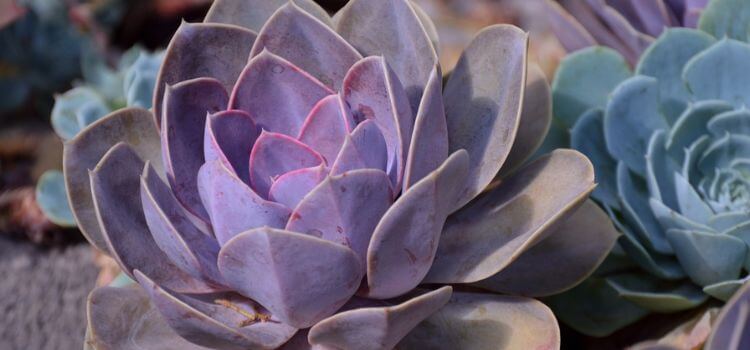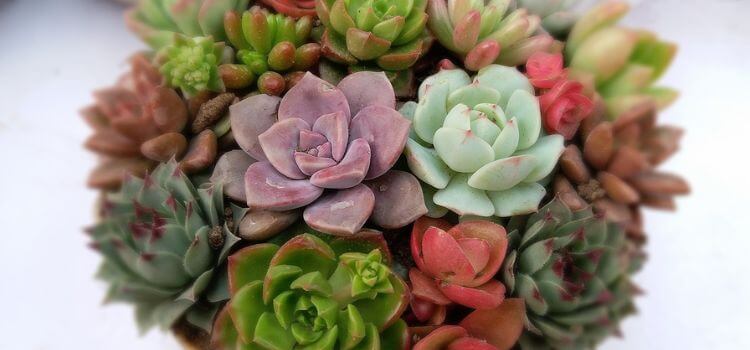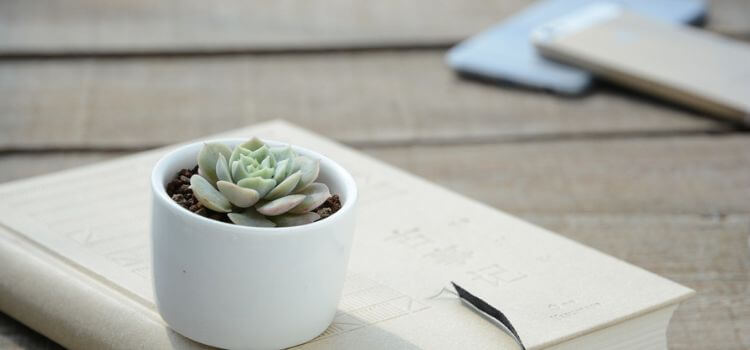As an Amazon Associate, I earn from qualifying purchases.
A small succulent typically needs water every 1-2 weeks. Ensure the soil dries out completely between waterings.
Succulents are famous for their low-maintenance care and unique appearance. These hardy plants store water in their leaves, allowing them to thrive in arid conditions. Proper watering is crucial for their health. Overwatering can lead to root rot, while underwatering can cause the plant to wilt.
The key is to let the soil dry out completely before watering again. This usually means watering every 1-2 weeks, depending on the environment. Adjust the frequency based on the season and humidity levels. Observing your succulent’s appearance will help you determine its specific needs. Healthy succulents have plump, firm leaves and vibrant colours.
Succulent Care
Succulents are easy to care for and come in many unique shapes and colours. They are perfect for busy people because they need little water and attention. Succulents can thrive indoors and outdoors and improve air quality.
Succulents need bright light and grow best in sunny spots. Plant them in well-draining soil. Avoid overwatering to prevent root rot, and water the soil only when it is completely dry. Succulents also need proper airflow, which helps them stay healthy and strong.
Watering Basics
Succulents need the right amount of water to stay healthy. Overwatering can cause root rot. Underwatering makes them dry and weak. Watering correctly helps them grow strong. Most small succulents need water every two weeks. Always let the soil dry before watering again. Use a pot with drainage holes to prevent water from sitting. This helps the plant stay healthy.

Overwatered succulents have soft, mushy leaves that might even turn yellow or translucent. Underwatered succulents have shrivelled, wrinkled leaves that may look dry and brittle. If you are unsure, check the soil. Wet soil means it’s overwatered, and dry soil means it needs water. Adjust your watering schedule based on these signs.
How Much Water Does a Small Succulent Need?
Different succulents need different amounts of water. Some types, like jade plants, store more water, which means they need less frequent watering. Others, like echeveria, need more regular watering. Knowing your succulent’s type helps you give the right amount of water.
Hot and dry climates make succulents need more water. Cool and humid environments mean they need less water. Indoor succulents may need less water than outdoor ones. Always check the soil before watering. It should be dry before you water again.
Watering Techniques
The soak-and-dry method is very effective. First, water the succulent until the soil is soaked. Then, let the soil dry out completely. This method mimics the plant’s natural habitat. Overwatering can harm the succulent. Always check the soil before watering again. Use your finger to test the soil’s dryness.
A spray bottle is helpful for small succulents. Spray water lightly onto the soil, but avoid spraying too much water. Direct water on leaves can cause rot. Use the spray bottle once a week, and ensure the soil dries out between sprays.
Seasonal Watering Guide
Small succulents need more water in summer. Water the soil thoroughly and let the soil dry before the next watering, which can be once a week. Overwatering can hurt your succulent. Watch for signs of thirst, like wrinkled leaves. Use room-temperature water.
Succulents need less water in winter. Water them once every three weeks, and the soil should dry out completely. Cold weather slows their growth, and too much water can cause root rot. Use less water than in summer, and keep the plant in a sunny spot.
Soil And Pot Considerations
Small succulents require well-draining soil and pots with drainage holes to prevent overwatering. Proper soil and pot choice ensure healthy growth.
Best Soil Types
Succulents need well-draining soil to prevent root rot. A good mix includes sand, perlite, and cactus soil. Use a balanced mix of these elements. It keeps the soil loose and airy, helping the water drain quickly. Regular potting soil is not ideal; it holds too much moisture. Choose soil specially made for succulents.
Choosing The Right Pot
Always select a pot with drainage holes. This helps excess water escape. Clay pots are a great choice. They allow the soil to dry out faster. Plastic pots retain more moisture. They could be better for succulents. A shallow pot works well. It matches the shallow root system of succulents. Make sure the pot size fits the plant. A pot too big holds too much water.
Common Watering Mistakes
Root rot is a common issue with succulents. Overwatering is the leading cause. Succulents need well-draining soil, and waterlogged soil leads to root rot. Always check the soil before watering. It should be dry to the touch. Use a pot with drainage holes. This helps excess water escape. Avoid letting the plant sit in water. Elevate the pot if necessary. This promotes air circulation. Healthy roots need oxygen.
Water stress shows in different ways. Leaves become wrinkled and shrivelled, which means the plant is thirsty. Overwatered succulents have soft, mushy leaves that may turn yellow or black. Stems may also become smooth. Adjust watering to fix these issues. Let the soil dry out completely. Then, water thoroughly but sparingly. Healthy succulents have firm, plump leaves that should look vibrant and colourful.
Expert Tips And Tricks
Small succulents need careful watering. Always check the soil before adding water. The top inch should be dry. You can use your finger to feel the soil. If it is still wet, wait a few days.
Water meters help you know when to water. They measure the moisture in the soil. Insert the meter into the soil. Read the level it shows. If it is low, then the plant needs water. Always follow the meter’s guide for the best results.

Frequently Asked Questions
Water small succulents sparingly. Use about one tablespoon every 1-2 weeks. Ensure soil dries entirely between watering.
Check the soil moisture. It should be dry to the touch before watering again. The leaves should look firm, not shriveled.
Yes, baby succulents need more water than mature ones. Water them lightly but more frequently. Ensure good drainage.
How Long Can A Small Succulent Go Without Water?
A small succulent can typically go without water for 1 to 3 weeks. Factors like climate and pot size affect this duration.
Conclusion
Watering small succulents requires a careful balance. Too much water can harm them. Use the soak-and-dry method. Ensure the soil is completely dry before watering again. Proper light and drainage are essential for their health. By following these tips, your small succulents will thrive beautifully.
Happy gardening!

